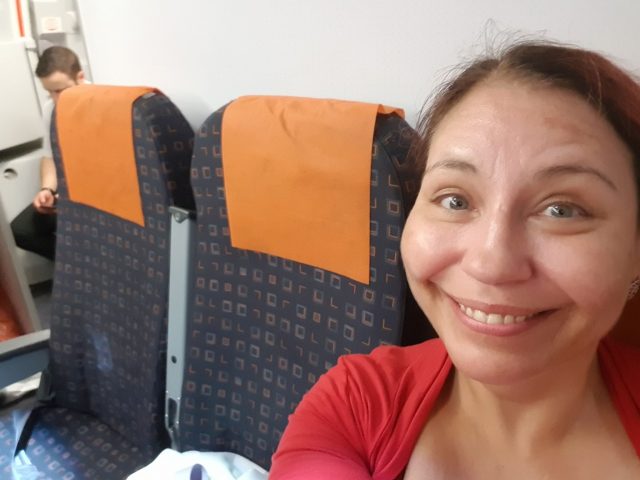Growing up in Sussex, England, Deb M. just thought she was clumsy. She’d trip over her feet and run into doors, and collected bruises and sprains like other kids collected baseball cards. Her extremities seemed to push into space without her being aware of it.
But lots of kids are awkward while they’re growing, and so what if she was a klutz? She was more interested in science than sports anyway. If she wasn’t destined to be a professional athlete, well, that was no great loss. She was content to laugh off any physical shortcomings, and return to her books.
Her late teens and early twenties were chaotic, though usually in a good way. At 19, she married her boyfriend and gave birth to her first child, a son. Two years later, she gave birth to a daughter. She trained as an operating room nurse, and went through a divorce. She moved north of London to attend Anglia Ruskin University, and trained to be a cell biologist.
She lived on her feet, whether she was chasing her own children or assisting in the operating theater. Then Deb cashed in on her education, and got a new job as a cell biologist. In theory, it would be more comfortable – she at least got to sit down to run experiments – but her job was not entirely free of physical demands.
She had some freedom of movement at the beginning of her day, when she would putter around and gather the materials she needed for her experiments. But once an experiment was running, she often had to sit still for hours at a time.
Some experiments were run under a containment hood, which allowed noxious chemicals to be vented outside. Although this setup saved her lungs, it did her shoulders no favors, as she often had to keep her arms outstretched for hours.
But while these restrictions could be annoying, they weren’t unbearable. Deb didn’t seem to register discomfort in the same way her coworkers did. She could tolerate static and awkward postures for longer than anyone else. That ability had served her well during the endless hours of standing as an operating room nurse, and it was certainly useful in the lab.
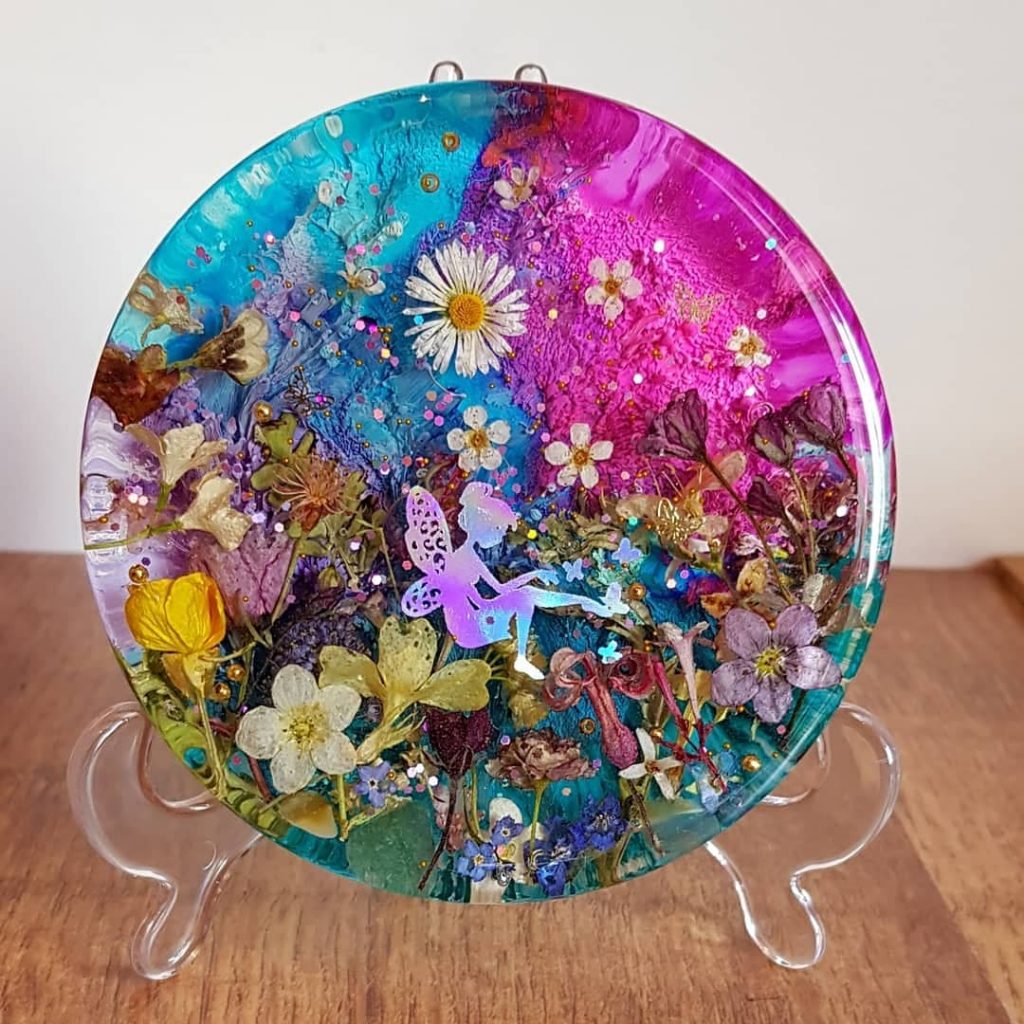
A Biologist Grapples with Her Own Biology
When she had to call out sick, it was due to unrelated matters, such as her chronic gastrointestinal and gynecological problems. In her late teens and twenties, Deb was plagued by cystitis and kidney infections. Unfortunately, most of these problems required invasive tests and inspections. As she puts it, “I was poked and prodded in most orifices known to women.”
A look inside her bladder showed that it was scarred from repeated infections, and the muscle around it was described as “floppy.” (That’s rarely a welcome adjective for describing one’s anatomy.) Doctors suspected that was why her bladder never seemed to empty properly. To get around this limitation, a surgeon stitched her bladder to her pelvic bone.
As far as invasive procedures went, Deb was just getting started. At the ripe old age of 23, she underwent a hysterectomy. Suddenly, her decision to start a family as a teenager looked prescient.
After Deb’s downstairs issues were taken care of, she managed to go a few years without a major health crisis. She focused on her career, and on her young family. Then, when she was in her 30s, her body staged another revolt.
Her joints, especially in her upper half, became swollen and painful. Reaching forward was torture. Frantic, Deb went to a rheumatologist who diagnosed her with psoriatic arthritis and gave her corticosteroids to control the inflammation.
The inflammation did eventually subside, but the pain did not. Running experiments – especially those that required Deb to reach forward into the containment hood – became impossible. She left her job as a scientist, and moved into a project manager role with a pharmaceutical company.
The diagnosis of arthritis also kickstarted Deb’s interest in fitness, and she began a dedicated diet and exercise program. She had never been overly concerned with these kinds of healthy habits before, but psoriatic arthritis had a way of comingling with conditions like hypertension, diabetes, and fatty liver disease.
Deb had no intention of becoming more of a statistic than she already was, so she started cooking at home, and going on long walks with her husband. She also started doing ninety minutes of yoga each day. (Naturally bendy, Deb found she had a knack for yoga.) She lost weight, and by all normal measures, she was the fittest she’d ever been in her life.
Then in her late 40s, she added an ex-colleague’s workload to her existing one. All of a sudden, she was spending eight hours in meetings, and twelve to fourteen hours at work. Work slowly invaded any moments of downtime. Deb worked through her lunch breaks, and worked from her couch at night. She didn’t have time to cook healthy meals, or do an hour and half of yoga daily. She and her husband started getting dinner at the pub. They rarely walked.
Any fitness benefits she’d earned soon evaporated. Deb was exhausted. Her hips and arms hurt. She had low blood pressure, and was prone to migraines and fainting.
She was also starting to wonder about that natural flexibility, and whether it was entirely a good thing. Perhaps there was a medical name for it. Like, hypermobility.
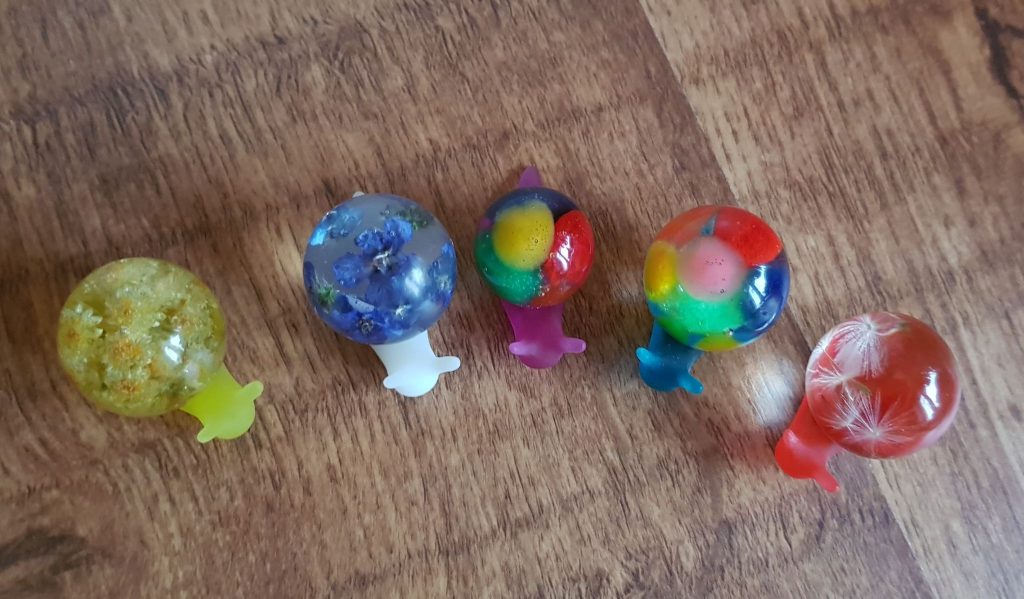
Hypermobility: You Really Can Be Too Flexible
At Debs’s next National Health Service doctor’s visit, the young rheumatologist said she didn’t know much about hypermobility. However, she had a friend in London who was something of an expert on the subject. Maybe Deb should go see her instead?
That was how, at the age of 42, Deb was finally diagnosed with hypermobile-type Ehlers-Danlos Syndrome (EDS). It was a genetic condition, although Deb seemed to have developed it spontaneously, as there was no family history of the condition. Her connective tissues didn’t behave like other people’s. They didn’t hold her organs together as tightly as they should, and let her joints extend far enough to cause injury.
In that context, the bits of body weirdness she’d noticed over the years fit together. It was as if the last piece of a jigsaw puzzle had been added, and now the whole picture was clear. Her strange joint problems, her clumsiness, her bladder issues, her low blood pressure, her innate flexibility, and even her velvety-soft skin were all clear signs of EDS.
Even her comfort with uncomfortable positions was part of her unique condition. Her supple connective tissues easily stretched to accommodate whatever strange positions she adopted. This was convenient in the short term, but predisposed her to injury in the long term. The lack of discomfort meant she would overstress her joints and tissues without realizing it.
The diagnosis helped explain her strange predisposition towards injury, but it offered no magical protection against it. She still couldn’t sense whether her joints were hyperextended, or her tissues were overly stressed, until she actually hurt herself.
After a year at work, she developed a shoulder subluxation (another word for a partial dislocation) from carrying her laptop under her arm. She spent six years dealing with the pain, using a combination of physiotherapy and sucking it up. Then, she signed up for surgery to pin the errant shoulder in place. The ball now stays firmly in its socket, but the pain remains.
Once, she developed a habit of turning her head 45-degrees to the side to watch TV while crocheting. She didn’t notice a problem until suddenly she couldn’t move her neck for a week. She also developed carpal tunnel from crocheting.
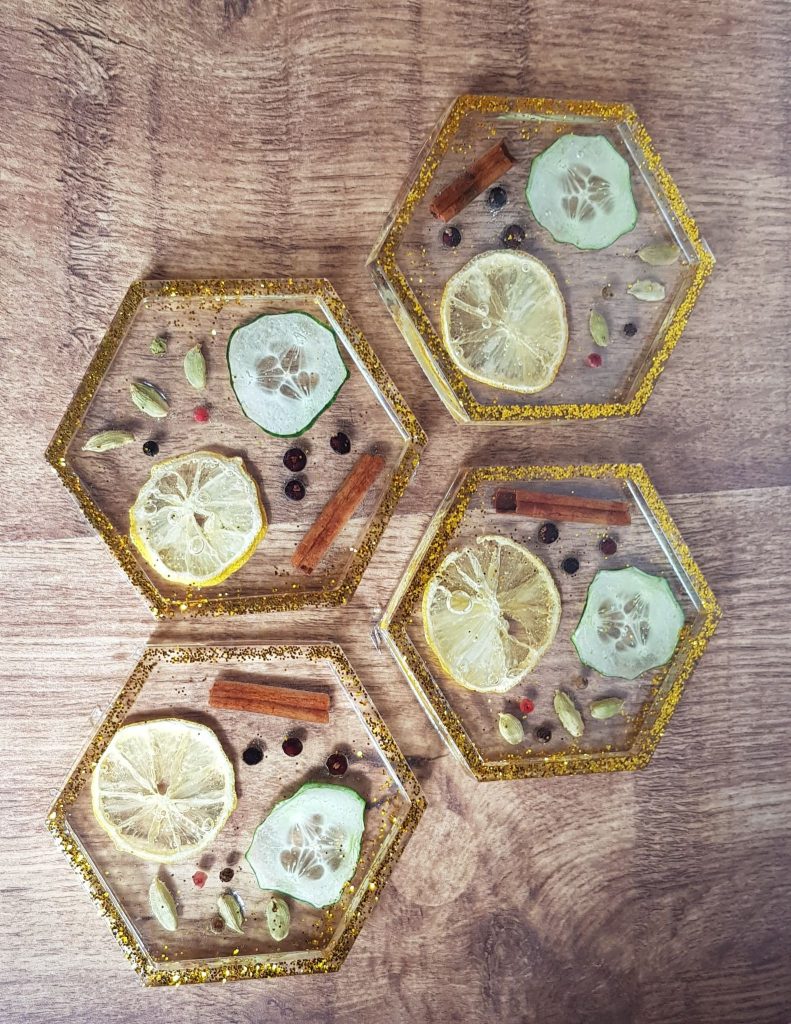
Deb Tries Sitting, and Her Back Doesn’t Like It
In 2015, three years after she was diagnosed with EDS, Deb decided to visit a pain clinic in the hopes of finding a way to deal with the seemingly never-ending string of musculoskeletal injuries. Her boss hadn’t found anyone to cover for her during her temporary absence, so Deb was frantically trying to keep up with emails during breaks in the program.
She got back home just before Easter. She stepped inside, gratefully dove into her cushiony couch to catch up on work, and immediately regretted it.
It was as if she’d impaled herself on a burning rod. A red-hot pain ran from her butt cheek through her spine. She immediately jumped up, but the pain didn’t go away.
There was a certain irony in the timing. Deb had just taken three weeks off work to go to a pain clinic, and now here she was, in worse shape than ever.
She tried to tough it out. She went to work on Monday as planned, and did her best to concentrate on meetings rather than the burning pain in her backside.
On Tuesday, Deb looked at her foot, and was surprised to see that it was still dangling at the end of her leg. That was strange, because her brain didn’t register it was there. There was a communication gap somewhere in her leg; everything below her upper thigh now refused to send sensory data to the spinal cord, and motor commands from her brain were lost in transit. She limped along, and avoided stairs.
By Wednesday, Deb was in so much pain that she could barely move, barely walk, and barely think. She still forced herself to go in to work, until she finally admitted defeat and went home.
Deb made a round of doctor’s visits, starting with her GP. She took another two weeks off work, and dutifully swallowed her prescribed codeine pills. To her dismay, the pain was still as insistent as ever. Two months later, she tried her luck with a private rheumatology consultant, who put her on another course of opioids – Tramadol, this time – which still did nothing meaningful to treat the problem.
What the Tramadol did do was turn Deb into a space cadet with perpetual insomnia. The drugs dulled her senses. She seemed to float in a fog that was pierced only by the searing pain. She couldn’t work, couldn’t hold a conversation, and couldn’t even watch TV. Her pain – and its treatment – kept her separated and isolated from the world at large.
It wasn’t much fun. Deb realized that her back pain might be out of her control, but the medications weren’t. She stopped taking the Tramadol. She went back to work, and while her company-provided standing desk helped, it didn’t spare her from the frequent pain of driving and sitting through meetings.
Less than a year later, Deb was made redundant in true corporate style. She found a promising job with a one-year contract, but it required frequent international travel and on-site office work. Her sitting pain hadn’t dissipated, and the job exacted a physical toll. When her contract ended, Deb was offered a permanent position, but she declined, and took a year off to focus on fitness and mindfulness instead.
A year later, she was back on the job market. The same company offered her a more agreeable four-day-a-week contract, no international travel required.
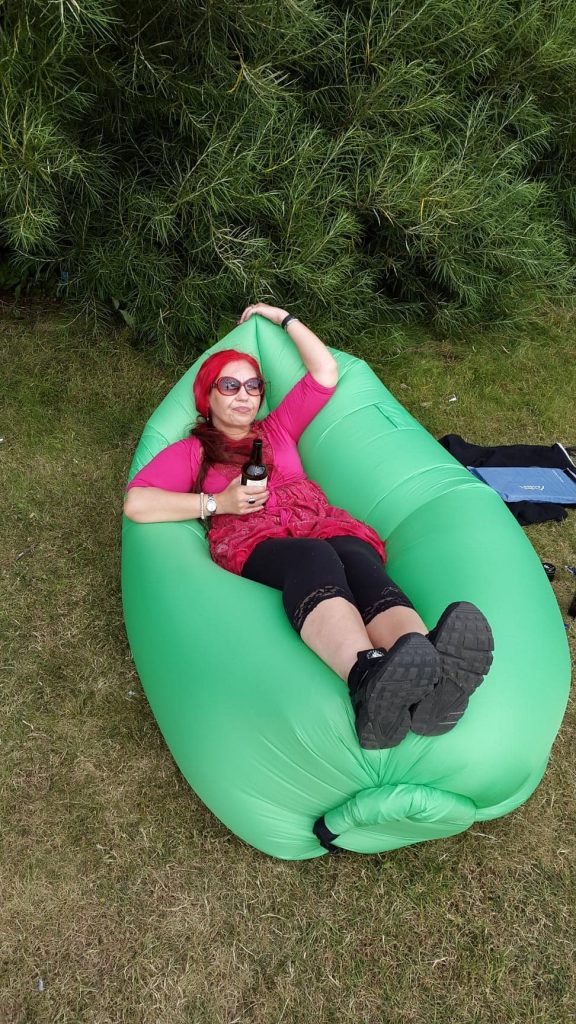
Sitting Pain, Take Two
Four years after her fateful couch flop, Deb stopped at the store to pick up some groceries. She made what turned out to be a tactical error. She lifted a bottle of detergent out of the trolley to place it on the checkout belt. She heard a sound, something between a pop and a squeak, and then she was stuck hunched over, in too much pain to stand up straight. She cried during the five-minute drive home.
Before this second incident, sitting had been painful, but possible in small doses. Afterwards, Deb’s sitting tolerance became nonexistent. If she tried, she’d feel a burst of pain and lose feeling in her foot. After about five minutes, severe nerve pain would set in.
The occupational health specialist at Deb’s new office helped her by recommending time off work. Her boss, however, was less sympathetic. He told Deb that if she couldn’t drive, well, tough toenails. He still didn’t want her working from home. He wouldn’t offer partial remote status, even though company policies gave all workers that option. (A talk with HR would later get Deb over that particular hurdle.)
A month later, Deb was let go during a curiously time round of office downsizing, and once again found herself on the job market.
Through a friend, Deb got a part-time, partly-remote, short-term contract that allowed her to keep working as a project manager while giving her a bit more space to take care of herself. She started walking again, though the 10-mile jaunts she had gone on during her fit phase now seemed overly ambitious.
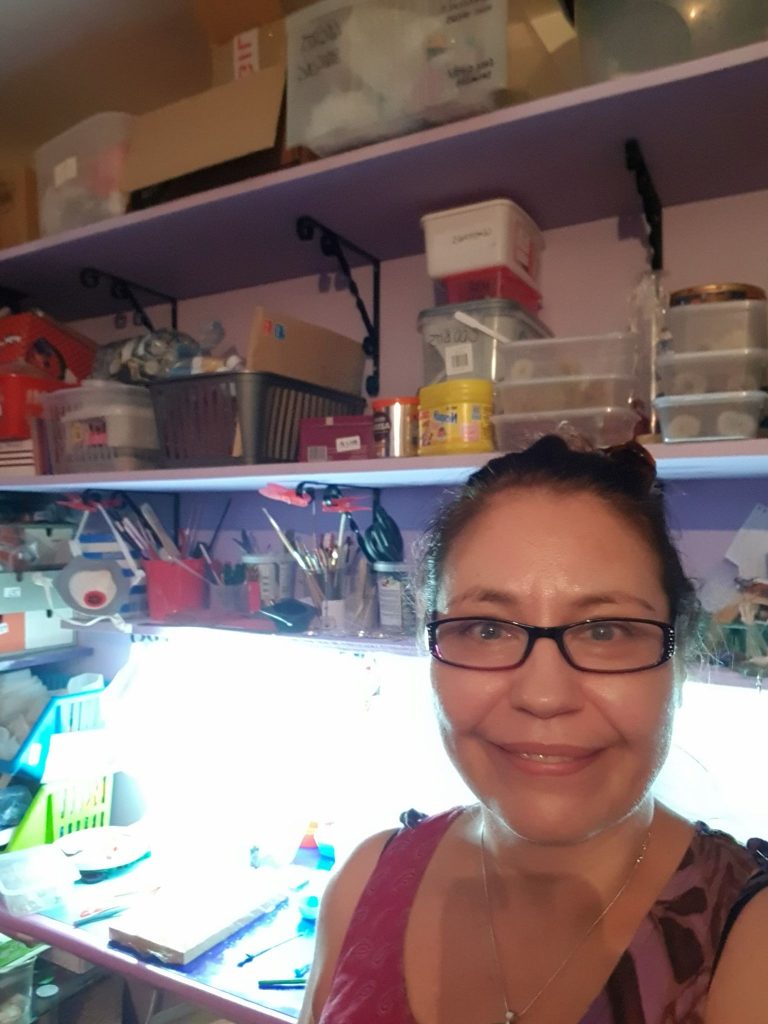
Despite Pain, Deb Gets Crafty
Crocheting didn’t work out so well, but Deb found another outlet for her crafting impulses. She found a hobby well suited to someone who couldn’t sit down, and had frequent surges of pain. She began tinkering with epoxy resins.
Although resins have a broad range of uses, including floor sealants and furniture, they’re a particularly versatile medium for craft projects. Brightly colored resins can be swirled for a wispy effect, and clear resins can be molded around ephemeral objects like dandelions gone to seed, or smiling pansies. Resins are usually layered, which allows for a broad range of effects and finished products.
Deb incorporated her daily walks into her creative process. She’d gather interesting tidbits along the way, like shells, or flowers, or seeds, and preserve them when she returned. Then she’d squirrel them away in drawers until it was time to use them for a project. Her projects included everything from jewelry, to paperweights, to (ironically) chairs.
When Deb’s work contract dried up in May of 2020, she decided to scale up her resin efforts. She started a nuMONDAY store under the name Cassiopeia Handcrafted and started selling her projects to the world at large. She couldn’t sign up for craft fairs – the coronavirus lockdown policies made that impossible – but she could accept special requests, and bask in the appreciation of her customers.
Online craft marketplaces don’t have a high density of millionaires, and Deb is realistic about her business’s prospects. She freely admits that it’s less a professional venture, and more of a hobby that pays for itself. But it keeps her busy, encourages her to try new techniques, and gives her a respectable way to move finished projects out of her house. (The failures, though, tend to pile up.)
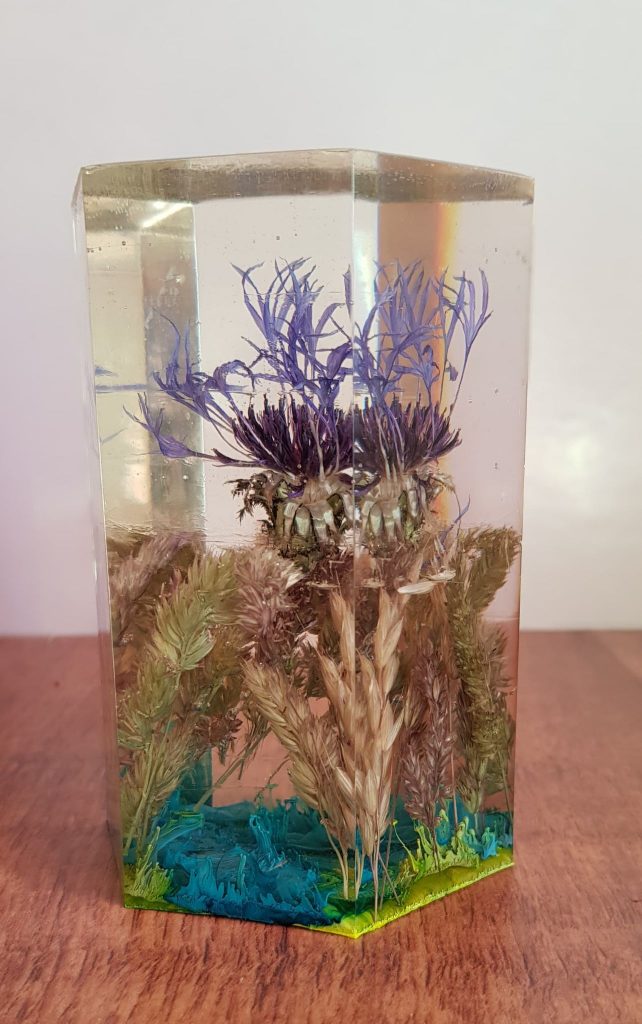
Opportunity Knocks. It’s Part-Time, and Remote.
Six weeks into her involuntary holiday, an old coworker called with a job offer. It was part-time, and fully remote. Better still, everyone on the team was remote, and would be even once the coronavirus restrictions were lifted.
The schedule wasn’t completely flexible; there were several hours of regular meetings each week. But as project manager, Deb got to schedule those meetings.
The job seemed custom-tailored to her situation. Deb gratefully accepted the offer, which saved her from boredom, gave her a paycheck, and provided an intellectual challenge.
These days, when she’s not working or crafting, Deb is scrupulously following an exercise program crafted by her personal trainer. The specifics of this program are apt to change frequently as Deb finds creative new ways to injure herself. (She recently dislocated her thumb while using the toilet.) But since her connective tissues are not doing a great job keeping her body together, she has to train her muscles to pick up the slack.
Deb has found that, in her case, movement is key to managing her condition. Although she’s often stiff or in pain, she still enjoys her daily walks. She credits her exercise program with helping her ward off avoidable injuries (though she gets her fair share), and keeping her fit enough to enjoy life. When she’s stiff, she’s learned to go play around in her workshop, rather than succumbing to the lure of the TV.
Deb is the first to admit that she doesn’t have all the answers, and her life is a work in progress. But for now, she’s in a good place. She has a job that pays the bills, and a hobby that brings her joy. She has close relationships with her family (and with her personal trainer). She doesn’t know what will happen tomorrow, but she’s thankful that today, at least, is a good day.
